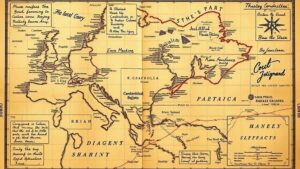Mining Oral Histories of Indigenous Tribes for Artifact and Fossil Leads
Mining Oral Histories of Indigenous Tribes for Artifact and Fossil Leads
The integration of oral histories from Indigenous tribes into archaeological research has emerged as a critical methodology in understanding past human activity, particularly regarding artifacts and fossils. This article aims to explore the significance of oral histories, the methodological frameworks for their application, and the implications for future archaeological findings.
Introduction
Oral histories are narratives passed down through generations, conveying cultural knowledge, traditions, and historical events from the perspectives of Indigenous communities. The use of oral traditions as a valid source of historical data can enhance archaeological research, particularly in areas where written records are scarce or nonexistent. A notable example is the collaboration between archaeologists and Indigenous peoples in North America, which has revealed significant insights into prehistoric life.
Significance of Oral Histories
Oral histories serve several important functions within archaeological contexts:
- They offer unique perspectives on historical events and cultural practices.
- They provide specific geographical information regarding artifact and fossil locations.
- They preserve knowledge about traditional environmental management practices.
For example, the Blackfoot Nation in Canada has detailed oral accounts that align with archaeological findings related to buffalo hunting practices. These narratives not only validate archaeological evidence but also highlight the holistic relationship between people and their environments.
Methodological Framework
The integration of oral histories into archaeological methodology requires a systematic approach to ensure that Indigenous voices are respected and accurately represented. Key components of this framework include:
- Establishing rapport and trust with Indigenous communities.
- Utilizing ethical protocols for interviewing and data collection.
- Collaborating in the interpretation of findings.
For example, in the 2010s, researchers from the University of Alberta collaborated with the Cree Nation to document oral histories related to sites of significance in the boreal forests. e efforts not only identified new archaeological sites but also informed conservation practices aligned with traditional land-use knowledge.
Challenges and Considerations
Despite the potential benefits, several challenges arise from integrating oral histories into archaeological practices:
- Differences in interpretation of historical events between Indigenous narratives and scientific understandings.
- Potential loss of knowledge as elders pass away without documentation.
- The risk of exploiting Indigenous knowledge without proper consent or benefit-sharing.
To address these challenges, collaborative frameworks emphasizing mutual respect are essential. Initiatives such as the 2017 Truth and Reconciliation Commission in Canada highlight the importance of Indigenous rights to cultural heritage, advocating for Indigenous-led research initiatives and community involvement.
Case Studies
Several case studies exemplify the successful application of oral histories in archaeological contexts:
- The Anishinaabe Tribes engagement with University of Minnesota archaeologists led to the discovery of ancient burial sites, guided by traditional knowledge that identified specific geographic markers.
- In New Zealand, MÄori oral traditions have been instrumental in locating and repatriating significant cultural artifacts from European institutions, showcasing the power of narrative in advocating for heritage rights.
Future Implications
As archaeological practices increasingly recognize the value of Indigenous oral histories, the field is poised for transformative change. The incorporation of such narratives can not only lead to new archaeological insights but also foster greater collaboration between Indigenous communities and researchers. This approach emphasizes co-creation of knowledge and highlights the importance of Indigenous sovereignty over cultural heritage.
Conclusion
Mining oral histories from Indigenous tribes provides invaluable leads for the discovery of artifacts and fossils, enriching our understanding of past human experiences. Recognizing the significance of these narratives initiates a broader dialogue on collaborative methodologies that honor Indigenous perspectives. As research continues to evolve, it is imperative that the archaeological community prioritizes ethical engagement and the acknowledgment of Indigenous rights in the pursuit of knowledge.
Actionable Takeaways
- Encourage interdisciplinary collaborations that include Indigenous voices in research efforts.
- Prioritize ethical practices that protect Indigenous knowledge and promote benefit-sharing.
- Invest in training programs for archaeologists on the importance of oral histories.
Ultimately, the future of archaeology benefits from a respectful integration of oral traditions, ensuring a comprehensive understanding of humanitys past.



